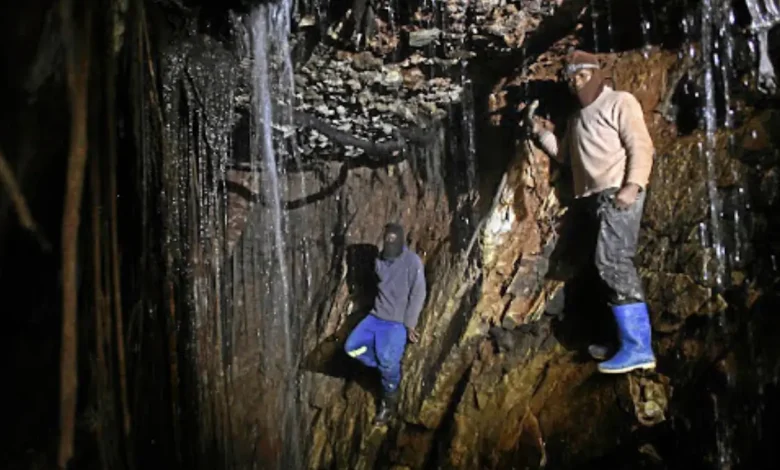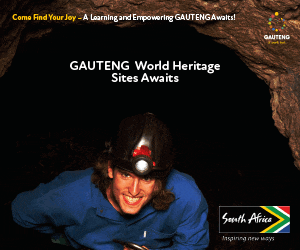Gauteng’s Roads and Suburbs at Risk: Illegal Mining Tunnels Cause Collapse and Chaos

Across Gauteng, highways and suburban streets now face a growing, invisible threat illegal mining tunnels, dug by so-called “zama zamas”, are steadily hollowing out the earth beneath roads, bridges, and homes. As a direct result, vital infrastructure is at risk of sudden collapse, with dangerous sinkholes appearing in places like Springs, Brakpan, and Benoni. In fact, entire sections of major roads have already crumbled, forcing lane closures and traffic diversions.

ALSO READ: Illegal Mining in Brakpan: Miners Digging Beneath Snake Road Poses Safety Threat
Why Gauteng Is So Vulnerable
Geological research confirms that the Witwatersrand reef system, beneath Johannesburg, is a vast sedimentary gold deposit formed millions of years ago. Decades of legal mining left behind a network of tunnels, with rock pillars supporting the ground above. When the mines closed, much gold remained. Now, illegal miners target these leftover riches, tunnelling directly under roads and homes.
Further compounding the danger is dolomite, a rock type under much of Johannesburg and Ekurhuleni that is inherently unstable. The University of Johannesburg has found that flooded mine voids increase hydrostatic pressure on dolomitic rock, raising the risk of sudden collapse. The University of Pretoria has documented over 3,000 cases of subsidence and sinkholes across Gauteng directly linked to human activity, particularly illegal mining.
Roads and Bridges Collapsing Across the Province
In places like Springs and Brakpan on Johannesburg’s East Rand, roads are visibly failing. The Rondebult Road sinkhole, Snake Road sinkhole, and now the N12 are all in danger. Main Reef Road in Benoni, near the Weltevreden landfill, is already gone, with open shafts and makeshift gold-washing sites where tar once lay.
Private security expert Marius van der Merwe, who has battled illegal mining for seven years, warns: “Roads are literally falling away. The unused part of Eloff Street extension in central Joburg has collapsed twice because there’s nothing holding it up any more. It’s not even a sinkhole in the traditional sense; it’s a tunnel right beneath the road surface that’s been hollowed out. And it’s happening in multiple places at the same time.”
Van der Merwe also recounts a direct intervention near the N17 highway: “They were removing the rock that supports the bridge itself because it contained traces of gold. That’s the level of damage. It’s not just a community issue; it’s a national infrastructure threat.”
Inside the Illegal Mining Labyrinth
Descending into these tunnels is dangerous. The entrances are small, muddy, and precarious. Inside, you find basic mining tools, discarded clothing, and even signs of miners living underground for weeks or months. Above ground, entire communities have sprung up to support the miners brothels, fast food, and crèches operating openly near the mining sites.
Crushing rocks happens both underground and on the surface, using homemade devices called pandukas. In downtown Johannesburg, a massive underground maze stretches from the M2 highway to the old Eloff Street extension, threatening every structure above it. The same pattern repeats in Springs, Muldersdrift, Roodepoort, and Mogale City.
Environmental and Health Risks Multiply
Illegal mining does not just endanger infrastructure it pollutes the environment. Miners use any available water to wash crushed rock, releasing toxic chemicals like mercury and cyanide into groundwater, rivers, and dams. Van der Merwe is now working with communities where water pollution threatens both human health and wildlife.
Police Action and Community Impact
Despite raids and arrests, the problem continues to grow. Every time authorities seal one tunnel, another appears. Police have yet to respond to questions about their enforcement efforts, but ongoing patrols and community tip-offs remain vital.
However, the scale of the problem is overwhelming. The Democratic Alliance (DA) and South African Federation of Trade Unions (Saftu) are calling for urgent action, warning that current policing is not enough. The DA highlights the ongoing impact: “The illegal mining activities are causing huge tremors, damaging infrastructure which chases away businesses and puts the lives and assets of residents at risk.”
What Needs to Be Done
To tackle this crisis, Gauteng needs:
- Sustained law enforcement: Regular and visible police patrols to detect and shut down illegal operations.
- Community engagement: Residents must report suspicious activity and support safety initiatives.
- Environmental protection: Monitoring and rehabilitating land to prevent further collapse and pollution.
- Economic alternatives: Job creation to reduce the lure of illegal mining.
The tunnels beneath Gauteng’s roads and suburbs are not just a nuisance they are a direct threat to public safety, infrastructure, and the environment. As Marius van der Merwe warns, “It’s not just a community issue; it’s a national infrastructure threat.” Urgent, coordinated action is needed from government, police, and communities. Without it, more roads will collapse, and more lives will be at risk.




